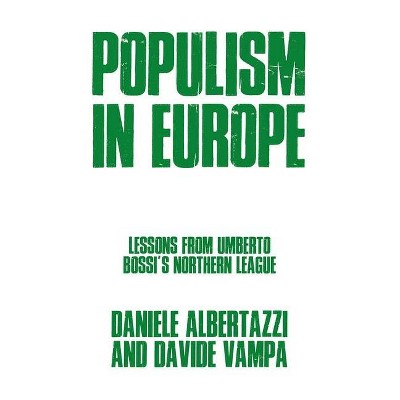From Siena to Nubia - by Daniele Salvoldi (Hardcover)

Similar Products
Products of same category from the store
AllProduct info
<p/><br></br><p><b> About the Book </b></p></br></br>Alessandro Ricci, born in Siena, Italy, traveled extensively throughout Egypt and Sudan between 1817 and 1822. He worked as an epigraphist for Giovanni B. Belzoni in the tomb of Seti I and later visited and documented Siwa (1820), Sinai (1820), and Nubia (1818-19 and 1821-22). Ricci wrote a long account of all his journeys and reworked a series of ninety plates into striking form, yet failed to publish either. From Siena to Nubia is the English-translated critical edition, with notes and introductory chapters, of Ricci's travel account.<p/><br></br><p><b> Book Synopsis </b></p></br></br>A medical practitioner and talented draftsman, Alessandro Ricci was born in Siena, Italy, at the end of the eighteenth century. He traveled extensively throughout Egypt and Sudan between 1817 and 1822. During his stay, he worked as an epigraphist for Giovanni B. Belzoni in the tomb of Seti I and later entered into the service of British consul general Henry Salt and English explorer William John Bankes, on whose behalf he visited and documented Siwa (1820), Sinai (1820), and Nubia (1818-19 and 1821-22). Ricci also became the physician to Ibrahim Pasha's Upper Egypt expedition and achieved fame for daringly saving the life of Ibrahim Pasha during the military campaign that led to Egypt's conquest of Sudan in 1821-22. Upon his return to Italy, Ricci wrote a long account of all his journeys and reworked a series of ninety plates into striking form, yet failed to publish either. In 2009, Daniele Salvoldi identified a complete typewritten copy of Ricci's Travels in the National Archives of Egypt in Cairo. Drawings intended to accompany the text as plates were tracked down in different locations in Italy and the United Kingdom. From Siena to Nubia is the English-translated critical edition, with notes and introductory chapters, of Ricci's travel account, which provides detailed information about the countries he visited, including descriptions of ancient ruins and social customs, botanical and geological remarks, and historical and ethnographical observations. It adds to the recent, growing corpus of exploration literature on nineteenth-century Egypt as well as bringing to light obscure sources important to the early history of Egyptology.<p/><br></br><p><b> Review Quotes </b></p></br></br><br><p>"An exquisite book, a must-read for anyone interested in Egyptology."--Lisa Kaaki, <i>Arab News</i></p> <p>Aimed primarily at an academic audience, <i>From Siena to Nubia</i> is highly recommended to anyone interested in the history of Egyptology and exploration.--Cathie Bryan, <i>Ancient Egypt Magazine</i></p> <p>[A] model for publishing 'period' manuscripts of this kind, both in content and immaculate presentation. It represents a major contribution to the study of early Egyptology and the history of early 19th century Egypt, and can be wholeheartedly recommended.--Aidan Dodson, <i>Egyptian Archaeology</i></p> <p>[I]n all ways, an exemplary publication of an important narrative.--Robert G. Morkot, <i>ASTENE Bulletin</i><br><p/><br></br><p><b> About the Author </b></p></br></br><br><strong>Daniele Salvoldi</strong> holds a PhD in Egyptology from the University of Pisa and currently teaches history of architecture at the Arab Academy for Science, Technology, and Maritime Transport in Alexandria, Egypt. In 2011, he catalogued the William J. Bankes Egyptological drawings in Dorchester and in 2014-2016 he was postdoctoral fellow at the Freie Universität Berlin.<br>
Price History
Price Archive shows prices from various stores, lets you see history and find the cheapest. There is no actual sale on the website. For all support, inquiry and suggestion messages communication@pricearchive.us



















